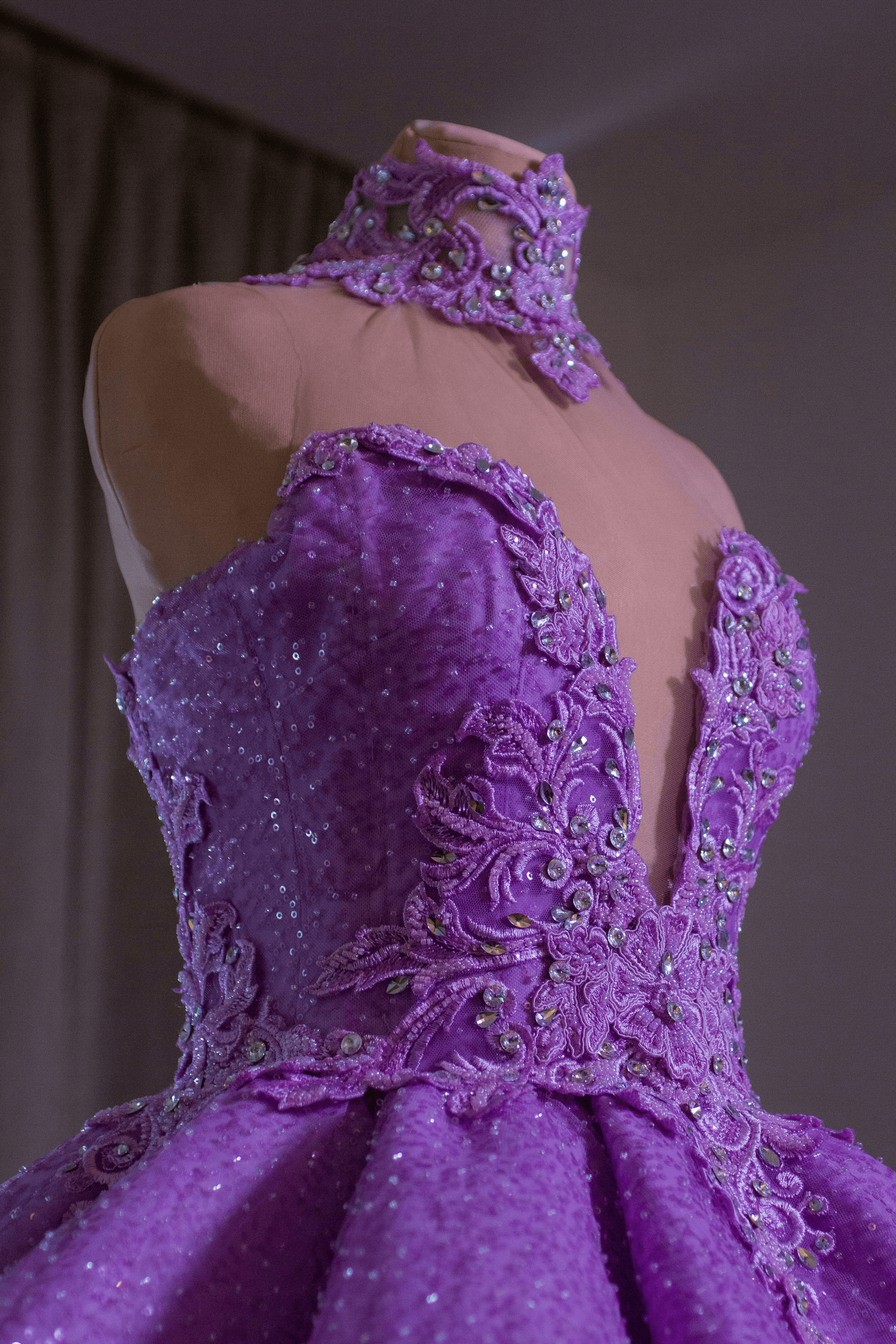Introduction

In the world of bridal fashion, the allure of a stunning gown is matched only by the meticulous process that ensures its quality. Quality Inspection for Bridal Gowns is not just a technical necessity; it’s an art form that guarantees every stitch, fabric choice, and design element meets the highest standards. With weddings being one of life’s most cherished moments, brides deserve nothing less than perfection in their attire.
Understanding Quality Inspection for Bridal Gowns
Quality Inspection for Bridal Gowns encompasses a series of checks designed to uphold the integrity and beauty of each piece. From initial design to final delivery, inspections focus on various aspects such as Packaging & Packing Inspection and Structure & Materials Inspection. This thorough approach ensures that every gown not only looks exquisite but also stands up to the rigors of wear and time.
The Importance of Inspections in Fashion
Inspections play a critical role in fashion by safeguarding brand reputation and customer satisfaction. In an industry where trends change rapidly, maintaining high standards through effective Workmanship assessments can make or break a label's success. Regular Quality Inspections ensure that manufacturers deliver products that align with both consumer expectations and regulatory requirements.
Why Choose Asian Manufacturing for Bridal Gowns
Asian manufacturing has become synonymous with quality craftsmanship and affordability in bridal gown production. Countries like China offer skilled artisans who specialize in intricate designs while adhering to strict Quality Inspection for Bridal Gowns protocols. Additionally, manufacturers are increasingly implementing On-site Tests to identify potential issues early on, ensuring that brides receive gowns that are nothing short of spectacular.
The Role of Quality Inspection for Bridal Gowns

Ensuring Design Integrity
When it comes to bridal gowns, design integrity is non-negotiable. Quality inspection for bridal gowns ensures that every gown reflects the designer's vision, from intricate lace patterns to delicate beadwork. A rigorous structure & materials inspection guarantees that all elements are faithfully reproduced and that no detail is overlooked—because every bride deserves her dream dress.
Moreover, maintaining design integrity also means adhering to original samples and specifications during production. This consistency not only satisfies customer expectations but also enhances brand reputation in a competitive market. Ultimately, quality inspections act as guardians of creativity, ensuring that each gown remains true to its artistic roots.
Maintaining Fabric Standards
The choice of fabric can make or break a bridal gown; thus, maintaining fabric standards through quality inspection is crucial. Bridal gowns often use luxurious materials such as silk, tulle, and chiffon—each requiring specific handling and care during manufacturing processes like packaging & packing inspection. A thorough examination ensures that fabrics are free from defects such as tears or discoloration before they become part of a beautiful gown.
Additionally, inspecting fabrics helps identify any potential issues related to wearability and comfort for brides on their big day. By verifying material quality upfront through structured inspections, manufacturers can avoid costly returns or dissatisfied customers later on down the line. In short, keeping an eagle eye on fabric standards safeguards both the product's aesthetic appeal and its functional durability.
Importance of Compliance with Regulations
In today's global marketplace, compliance with regulations cannot be ignored when it comes to quality inspection for bridal gowns. Different countries have varying standards regarding textiles and garment safety; thus manufacturers must navigate these waters carefully to ensure compliance throughout production cycles. Failure to adhere could result in significant legal ramifications or even damage to a brand's reputation.
On-site tests play an essential role here by allowing inspectors to verify not just craftsmanship but also adherence to local regulations governing materials used in garments like wedding dresses. This diligence fosters trust between manufacturers and retailers while ultimately benefiting consumers who seek high-quality products without hidden risks involved in foreign imports. By prioritizing compliance through effective quality inspections, businesses can confidently market their bridal lines across borders.
Key Aspects of Quality Inspection
Each stage of inspection plays a crucial role in maintaining the integrity and appeal of bridal gowns, from packaging to materials and workmanship. Understanding these components can help manufacturers deliver exceptional products that brides will cherish on their special day.
Packaging & Packing Inspection
Packaging & Packing Inspection is vital in protecting bridal gowns during transit and storage. Proper packaging not only prevents damage but also enhances the overall presentation of the gown when it reaches retailers or customers. Inspectors examine materials used for packaging, ensuring they are robust enough to withstand handling while maintaining an attractive appearance that reflects the gown's elegance.
Moreover, the packing process itself is scrutinized to confirm that each gown is folded correctly and securely placed within its protective covering. This attention to detail minimizes creasing or other potential damage that could detract from a bride's experience when unveiling her gown for the first time. Ultimately, effective Packaging & Packing Inspection safeguards both product quality and customer satisfaction.
Structure & Materials Inspection
Structure & Materials Inspection focuses on assessing the fundamental qualities of bridal gowns, including fabric types, stitching techniques, and overall construction integrity. This inspection ensures that all materials used meet industry standards for durability and aesthetic appeal while also aligning with design specifications set by designers or brands. Inspectors look for any defects in fabrics—such as tears or discoloration—that could compromise both appearance and longevity.
In addition to fabric evaluation, inspectors assess stitching quality throughout the gown’s structure, checking for consistency and strength in seams that will endure wear during events such as fittings or weddings. By emphasizing Structure & Materials Inspection, manufacturers can confidently guarantee their products' reliability while enhancing their reputation within a competitive market focused on quality assurance.
Verifying Workmanship Quality
Verifying Workmanship Quality is perhaps one of the most critical aspects of Quality Inspection for Bridal Gowns because it reflects a manufacturer’s craftsmanship and attention to detail. Skilled inspectors meticulously evaluate every aspect of workmanship—from intricate beadwork to delicate lace applications—to ensure they meet both aesthetic expectations and functional requirements expected by discerning brides-to-be.
This process often includes an On-site Test where inspectors observe production practices firsthand—allowing them to identify any inconsistencies or areas needing improvement immediately. By focusing on Verifying Workmanship Quality through thorough inspections, manufacturers can uphold high standards while fostering trust with clients who seek perfection in their bridal attire.
The Process of On-site Testing

Conducting Comprehensive Checks
Comprehensive checks are crucial for ensuring that bridal gowns meet expected quality benchmarks. This includes detailed evaluations of Packaging & Packing Inspection to confirm that each gown is securely packaged to prevent damage during transit. Additionally, Structure & Materials Inspection plays a vital role in assessing fabric integrity and design accuracy, ensuring that every stitch is perfect.
During these checks, inspectors meticulously examine workmanship to identify any potential flaws or inconsistencies before they reach the consumer. By conducting comprehensive checks on-site, manufacturers can address issues promptly, reducing waste and enhancing overall product quality. This proactive approach not only safeguards brand reputation but also delights brides-to-be with flawless gowns.
Assessing Vendor Competence
Vendor competence is a key factor in successful Quality Inspection for Bridal Gowns. An effective on-site test involves evaluating a vendor's ability to adhere to specified standards and timelines consistently. Inspectors assess their processes, equipment, and personnel qualifications to ensure they can deliver high-quality products reliably.
A competent vendor will demonstrate a strong understanding of Packaging & Packing Inspection protocols as well as Structure & Materials Inspection requirements. Moreover, their commitment to maintaining high workmanship standards reflects positively on your brand’s image and customer satisfaction levels. Ultimately, partnering with capable vendors minimizes risks and enhances the overall quality assurance process.
Real-time Problem Detection
Real-time problem detection is one of the standout benefits of conducting on-site tests during Quality Inspection for Bridal Gowns. By being physically present at the manufacturing site, inspectors can quickly identify any discrepancies or defects as they arise—before they escalate into larger issues down the line. This immediate feedback loop allows manufacturers to make necessary adjustments swiftly.
For instance, if an issue arises during Packaging & Packing Inspection or while examining structure and materials, it can be addressed right away rather than waiting until after production has finished—saving time and resources in the long run! Furthermore, real-time detection fosters a culture of continuous improvement among vendors who are motivated by constructive feedback from inspections focused on workmanship quality.
In conclusion, incorporating thorough on-site testing into your bridal gown production process ensures that every piece meets exceptional standards before reaching customers’ hands—creating trust between brands and brides everywhere!
How China Inspection Pro Enhances Quality

Expertise in Bridal Gown Inspections
China Inspection Pro boasts a team of seasoned professionals who specialize in Quality Inspection for Bridal Gowns. Their extensive experience allows them to identify potential issues that could compromise the integrity of a gown before it reaches the market. From evaluating fabric quality to assessing craftsmanship during On-site Tests, their expertise ensures that every detail is scrutinized for perfection.
Tailored Solutions for Your Business
Understanding that each client has unique needs, China Inspection Pro offers tailored solutions designed specifically for your business requirements. They recognize that not all bridal gowns are created equal; hence, they customize their Quality Inspection for Bridal Gowns services accordingly. Whether you need comprehensive Packaging & Packing Inspections or detailed Structure & Materials Inspections, they adapt their approach to fit your specific demands and standards.
Building Trust Through Transparency
One of the cornerstones of China Inspection Pro’s philosophy is transparency in every aspect of their operations. By providing clear communication throughout the Quality Inspection process, they foster trust with their clients, which is crucial in an industry where reputation matters immensely. Regular updates during inspections and detailed reports on Workmanship quality help clients feel confident about their decisions regarding bridal gown manufacturing.
Challenges in Quality Control Across Borders

Quality control in the bridal gown industry is not just a matter of checking off boxes; it’s a complex dance across cultures, languages, and standards. When sourcing from different countries, particularly in Asia, manufacturers and designers often face unique hurdles that can affect the end product. Understanding these challenges is essential for ensuring effective Quality Inspection for Bridal Gowns.
Navigating Cultural Differences
Cultural nuances can significantly impact how quality inspections are perceived and executed. For instance, what one culture deems acceptable might be considered subpar by another, leading to discrepancies during Packaging & Packing Inspection or Structure & Materials Inspection. To bridge this gap, it's crucial to foster an environment of respect and understanding between manufacturers and inspectors, promoting open dialogue about expectations.
Moreover, cultural attitudes toward craftsmanship can influence the Workmanship quality of bridal gowns. In some cultures, meticulous attention to detail is a point of pride; in others, efficiency might take precedence over perfection. By aligning on these values early in the production process, businesses can mitigate misunderstandings that could lead to costly errors.
Language Barriers and Communication
Language barriers are perhaps one of the most immediate challenges faced during international collaborations. Miscommunication can easily occur if terms related to Quality Inspection for Bridal Gowns are misunderstood or misinterpreted during discussions about specific checks like On-site Tests or general quality protocols. Clear communication is vital for ensuring that everyone involved understands their roles and responsibilities.
To combat these barriers effectively, employing bilingual staff or professional translators can make a significant difference. This investment not only facilitates smoother interactions but also enhances trust between parties by demonstrating commitment to clear communication regarding quality standards. Additionally, using visual aids such as diagrams or checklists during inspections helps convey complex ideas without relying solely on language.
Adapting to Diverse Quality Standards
Different countries have varying regulations and benchmarks when it comes to quality assurance processes in fashion manufacturing. Adapting to these diverse standards requires a flexible approach that respects local norms while maintaining overarching goals for Quality Inspection for Bridal Gowns. This means staying updated on international regulations while also being aware of local practices that may differ significantly from one's own.
The challenge lies not just in compliance but also in ensuring consistency across all inspections—whether during Packaging & Packing Inspection or Structure & Materials Inspection phases—regardless of geographic location. Companies must be proactive about educating their teams on these variations so they can conduct thorough On-site Tests without missing critical elements due to oversight or lack of knowledge about local expectations.
Ultimately, navigating cultural differences, overcoming language barriers, and adapting to diverse quality standards are essential steps toward achieving excellence in bridal gown production through effective quality control measures.
Conclusion
In the fast-paced world of bridal fashion, quality inspections are not merely a checkbox on a to-do list; they are the backbone of excellence. The importance of Quality Inspection for Bridal Gowns cannot be overstated, as it ensures that each gown meets the highest standards before reaching brides. By prioritizing inspections, manufacturers can gain a competitive edge that sets them apart in an increasingly crowded market.
The Competitive Edge of Quality Inspections
Quality Inspection for Bridal Gowns offers an undeniable advantage by safeguarding design integrity and ensuring that every detail is perfect. With thorough assessments like Packaging & Packing Inspection and Structure & Materials Inspection, brands can confidently present their products to discerning customers. In a world where first impressions matter immensely, impeccable quality can be the difference between a sale and a missed opportunity.
Trusting Your Bridal Gown Manufacturer
Choosing the right bridal gown manufacturer goes beyond just cost; it’s about trust and reliability in delivering quality products. By understanding the importance of Workmanship and how it impacts overall satisfaction, you can make informed choices when selecting your manufacturing partner. Engaging with manufacturers who prioritize On-site Testing demonstrates their commitment to excellence and helps build long-lasting relationships based on mutual respect.
Making Informed Decisions for Quality Assurance
When navigating the intricate landscape of bridal gown production, making informed decisions is paramount for ensuring quality assurance throughout the process. Familiarity with key quality inspection aspects—such as Packaging & Packing Inspection, Structure & Materials Inspection, and Workmanship—empowers businesses to select partners who align with their vision for perfection. Ultimately, investing time in understanding these elements will lead to superior products that delight brides on their special day.
